 Last additions - Itabashi-shuku Post Town 板橋宿 Last additions - Itabashi-shuku Post Town 板橋宿 |

And this one, I Photoshopped for the 2nd anniversary of the Tohoku triple disasters.Mar 11, 2013
|
|

Itabashi-shuku (or Itabashi-juku) was the first post town on the Nakasendo Road from Nihonbashi to Kyoto. It was where travelers lodged and arranged travel logistics. Today, Itabashi-juku is totally modern, basically a shopping and residential area.Ukiyoe print of Itabashi-juku by Eisen.Mar 08, 2013
|
|
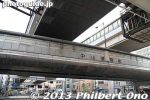
Mar 08, 2013
|
|
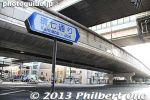
Kan-nana loop roadMar 08, 2013
|
|
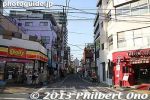
Itabashi-shuku goes further north.Mar 08, 2013
|
|
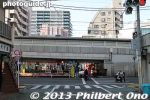
Kan-nana loop roadMar 08, 2013
|
|
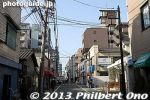
Kami-shukuMar 08, 2013
|
|

This one says that HE HATES [name of girlfriend] and wants to break up.Mar 08, 2013
|
|

This one says that she wants to break away from a Mr. Matsuda whom she met in Shinjuku on Jan. 27, 2013. A stalker perhaps.Mar 08, 2013
|
|

This woman wants to sever her headaches.Mar 08, 2013
|
|

It was amusing to read the cutting-ties prayers on the ema wooden tablets. This one says that she wants her husband to cut ties from obtaining things so she can cut ties from putting away those things. A pack rat.Mar 08, 2013
|
|
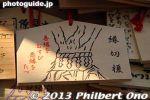
Wooden prayer tablets for cutting ties.Mar 08, 2013
|
|
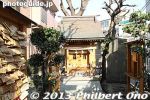
In the old days, people (especially newlyweds) avoided walking near this tree. The tree today is the third incarnation of the original one.Mar 08, 2013
|
|
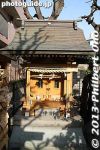
There's a famous story of Princess Kazunomiya traveling from Kyoto to Tokyo in 1861 to marry future shogun Tokugawa Iemochi. She and her entourage arrived in Itabashi-shuku and made a detour to avoid this tree. She lodged in Itabashi.Mar 08, 2013
|
|

I call this the divorce shrine, opposite from the numerous en-musubi shrines (縁結びの神社) for making a connection/relationship (marriage partner, etc.).Mar 08, 2013
|
|

About the En-kiri enoki (縁切榎) "Cutting-ties hackberry tree."Mar 08, 2013
|
|

En-kiri enoki (縁切榎) which means, "Cutting-ties hackberry tree." Cutting ties can refer to breaking a relationship or connection with someone (spouse, GF, BF, etc.) or something (illness, etc.). Mar 08, 2013
|
|
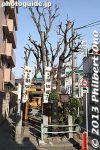
I thought this little shrine and Chinese hackberry tree was Itabashi-shuku's most interesting remnant.Mar 08, 2013
|
|
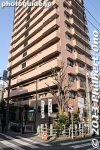
On a quiet street corner near the koban in Kami-shuku is the En-kiri enoki (縁切榎) which means, "Cutting-ties hackberry tree."Mar 08, 2013
|
|

About Kami-shuku.Mar 08, 2013
|
|
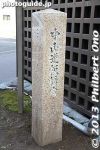
Kami-shuku stone marker next to the koban.Mar 08, 2013
|
|
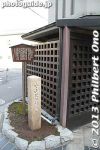
Kami-shuku stone marker next to the koban.Mar 08, 2013
|
|
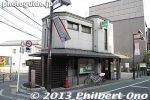
Koban police box at Kami-shuku, Itabashi-shuku.Mar 08, 2013
|
|
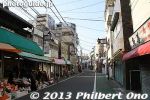
Mar 08, 2013
|
|
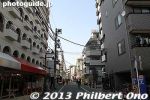
Kami-shuku at Itabashi-shuku, Tokyo. More condos and fewer people walking around.Mar 08, 2013
|
|
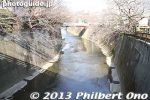
Shakujii River as seen from Itabashi Bridge. The bridge serves as the boundary between Naka-shuku and Kami-shuku.Mar 08, 2013
|
|

Shakujii River as seen from Itabashi Bridge.Mar 08, 2013
|
|

Itabashi Bridge is one of Itabashi Ward's Ten Famous Sights.Mar 08, 2013
|
|

About the Itabashi Bridge.Mar 08, 2013
|
|
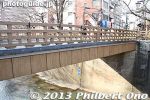
Itabashi Bridge over the Shakujii River.Mar 08, 2013
|
|
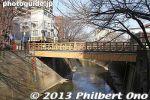
Itabashi Bridge over the Shakujii River.Mar 08, 2013
|
|
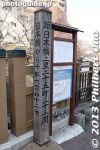
Sign post next to Itabashi Bridge indicating the distance to Nihonbashi.Mar 08, 2013
|
|
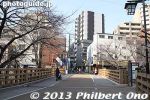
Itabashi Bridge goes over the Shakujii River. Itabashi-shuku (and Itabashi-ku Ward) got its name from this bridge. The first Itabashi Bridge was built during the Heian Period.Mar 08, 2013
|
|
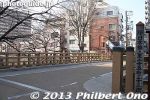
Itabashi means wooden plank bridge. The Itabashi Bridge during the Edo Period was a wooden arch bridge 16.4 meters long and 5.5 meters wide. In 1932, it was rebuilt with concrete. This current bridge was built in 1972.Mar 08, 2013
|
|
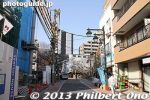
Straight ahead is Itabashi Bridge.Mar 08, 2013
|
|

Mar 08, 2013
|
|
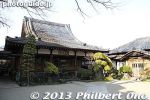
Mar 08, 2013
|
|

文殊院Mar 08, 2013
|
|

Sign for Itabashi-shuku's Waki-Honjin in Naka-shuku in Itabashi-shuku.Mar 08, 2013
|
|

Sign and stone marker for Itabashi-shuku's Waki-Honjin in Naka-shuku in Itabashi-shuku. There were two other Waki-Honjin in Itabashi-shuku, but I couldn't find them.Mar 08, 2013
|
|
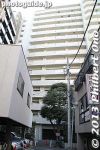
Site of the Waki-Honjin in Naka-shuku in Itabashi-shuku. A huge condominium now stands here. The landowner lives on the top floor.Mar 08, 2013
|
|

Sign for Itabashi-shuku's Honjin.Mar 08, 2013
|
|
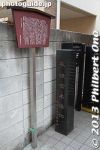
Sign and stone marker for Itabashi-shuku's Honjin.Mar 08, 2013
|
|

The brown building was where the Honjin was. (There's a sign and stone marker.) Mar 08, 2013
|
|

The brown building on the right was where Itabashi-shuku's Honjin was. (There's a sign and stone marker.) The Honjin was the special lodge for VIP travelers such as daimyo and emperors.Mar 08, 2013
|
|

Mar 08, 2013
|
|
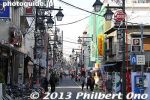
Approaching the center of Naka-shuku.Mar 08, 2013
|
|
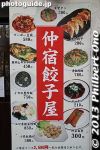
Gyoza dumpling shop in Naka-shuku, Itabashi-shuku.Mar 08, 2013
|
|
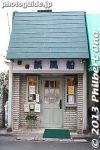
Coffee shop in an old building.Mar 08, 2013
|
|
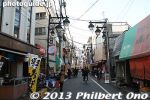
Nakashuku in Itabashi-shuku.Mar 08, 2013
|
|
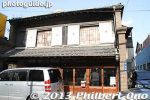
Old building in Naka-shukuMar 08, 2013
|
|
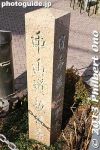
Nakasendo Road markerMar 08, 2013
|
|
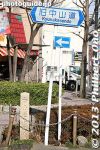
Mar 08, 2013
|
|
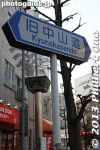
Mar 08, 2013
|
|

Entrance to the Naka-shuku section of Itabashi-shuku. This was and still is the main section of Itabashi-shuku.Mar 08, 2013
|
|
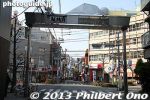
End of Hirao-shuku section of Itabashi-shuku.Mar 08, 2013
|
|

Mar 08, 2013
|
|

Mar 08, 2013
|
|
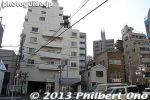
Part of Itabashi-shuku that was the small red-light district.Mar 08, 2013
|
|

A 3D map of the old Nakasendo Road from Tokyo to Kyoto with all the shukuba post towns marked. The road winds through many valleys.Mar 08, 2013
|
|

Inside Itabashi Tourist Information office. They had friendly guides explaining about Itabashi-shuku.Mar 08, 2013
|
|

Itabashi Tourist Information office.Mar 08, 2013
|
|

In pink is the area that was once the Kaga samurai clan's estate in Itabashi. The Kaga clan was from present-day Ishikawa Prefecture (Kanazawa).Mar 08, 2013
|
|

Mar 08, 2013
|
|
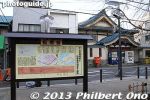
Mar 08, 2013
|
|
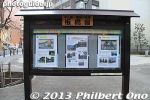
Signboard at a small park.Mar 08, 2013
|
|
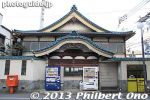
A sento public bath in Itabashi-shuku, Tokyo.Mar 08, 2013
|
|
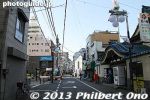
Mar 08, 2013
|
|
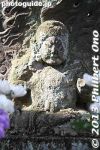
Mar 08, 2013
|
|
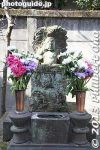
Mar 08, 2013
|
|
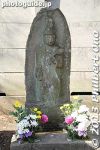
Mar 08, 2013
|
|
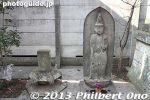
Mar 08, 2013
|
|
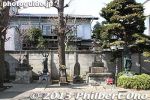
Mar 08, 2013
|
|
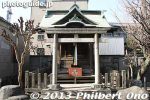
Shrine at Kanmyoji templeMar 08, 2013
|
|

About KanmyojiMar 08, 2013
|
|
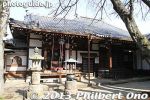
Kanmyoji temple main hallMar 08, 2013
|
|
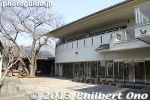
Kanmyoji temple social hallMar 08, 2013
|
|

Mar 08, 2013
|
|

About the Koshin-to stone monument 庚申塔Mar 08, 2013
|
|
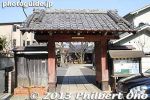
Another gate at Kanmyoji temple.Mar 08, 2013
|
|
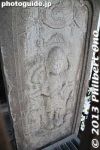
Koshin-to stone monument at Kanmyoji temple in Itabashi-shuku, Tokyo 庚申塔Mar 08, 2013
|
|
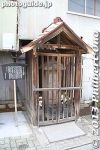
Koshin-to stone monument 庚申塔Mar 08, 2013
|
|
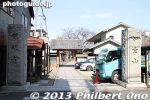
Entrance to Kanmyoji temple.Mar 08, 2013
|
|
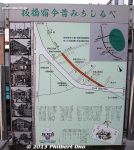
Roadside map showing places of interest. Temples are the main remnants still remaining from the old days.Mar 08, 2013
|
|
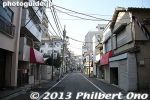
Today, Itabashi-shuku is a hodgepodge of shops, restaurants, and condominiums.Mar 08, 2013
|
|

About Itabashi-shuku. Mar 08, 2013
|
|
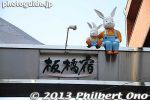
Mar 08, 2013
|
|
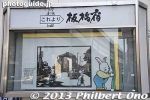
Mar 08, 2013
|
|
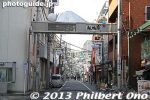
Entrance to Itabashi-shuku. Itabashi-shuku had one Honjin lodge for VIPs, three Waki-honjin, and 54 other lodges.Mar 08, 2013
|
|
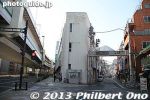
I walked from Shin-Itabashi Station to this entrance to Itabashi-shuku on the right. In the middle, they used to have the old Itabashi Police Station until 1933.Mar 08, 2013
|
|

There is also Itabashi Bridge after which Itabashi Ward takes its name. You can walk along Itabashi-juku from Shin-Itabashi Station to Itabashi-Honcho Station on the Mita subway line.Mar 08, 2013
|
|
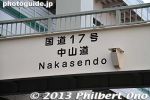
But I was able to find a few remnants of the old post town or at least stone markers. Itabashi-juku had three sections, Hirao-shuku, Naka-shuku, and Kami-shuku. Naka-shuku was in the middle and the busiest part of the town.Mar 08, 2013
|
|
|
|